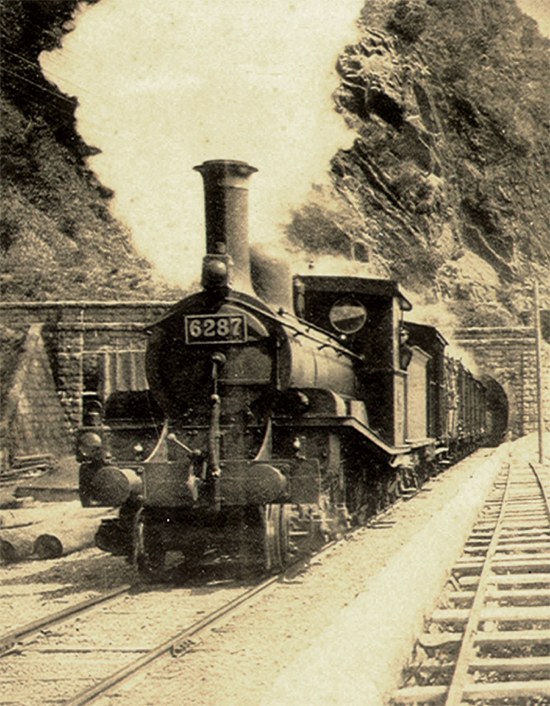CONTENTS
| PREFACE | 9 |
| PROLOGUE | |
|
Japan Before 1853 |
11 |
|
Introduction of Railway Technology, the Shōgunal Railway Proposal, and the First Railway Concession |
21 |
|
Intrigue, Influence, and Incompetence as Railway Planning Begins in Earnest |
39 |
|
Building the First Railway |
57 |
|
Kōbe to Kyōto |
87 |
|
Ōtsu, Tsuruga, Nagahama, and East to the Nōbi Plain |
99 |
|
Extending and Integrating the System |
109 |
|
The Second Railway Mania and the Russo-Japanese War |
181 |
|
Nationalization and Self-sufficiency |
223 |
|
Tōkyō Station |
255 |
|
Original Metropolitan Terminii of Principal Meiji Era Non-Government Railways |
262 |
| 262 | |
| 262 | |
| 262 | |
| 266 | |
| 267 | |
| 268 | |
| 268 | |
| 270 | |
| 270 | |
| 271 | |
| 272 | |
| 276 | |
| 277 | |
| 279 | |
| 280 | |
| 281 | |
| 282 | |
| 284 | |
| 286 | |
| 287 |

An unidentified coastal location, perhaps on the Atami line during construction, as presumably a contractor’s temporary narrow gauge (762mm) line is visible to the right while construction baulks and scaffolding are still visible at the curtained mouth of the new tunnel shaft just seen to the left of the smokebox door. The locomotive seen is a D-9 class member, designated the 6270 class and built by Dubs, soon to be the North British Locomotive Works. The running number on the smokebox door dates the photograph to after 1909 when IJGR changed its numbering scheme.